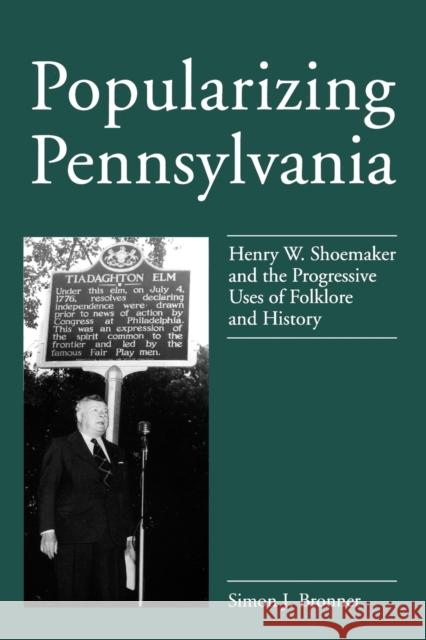Popularizing Pennsylvania - Ppr. » książka
Popularizing Pennsylvania - Ppr.
ISBN-13: 9780271014876 / Angielski / Miękka / 1996 / 302 str.
Few regions have had as energetic and influential a promoter as Henry W. Shoemaker (1880-1958), who devoted his life's work to preserving Pennsylvania's cultural and natural heritage. His memory lives on in the legends he helped promote, such as that of the Indian princess "Nita-Nee," for whom Central Pennsylvania's Nittany Mountain is supposedly named. He was also instrumental in creating Pennsylvania's noted system of parks and forests and the Pennsylvania Historical and Museum Commission. In his own day, Shoemaker was a controversial figure, talked about for his immense wealth, powerful connections, eccentric hobbies, and, above all, his consuming passion for conserving and promoting Pennsylvania's wildlife, mountains, and common folk. During the Progressive Era, he fell in with national leaders such as Theodore Roosevelt and Gifford Pinchot, who encouraged Americans to commune with nature and to appreciate its history and legend. He espoused the Progressive belief that nature and folk cultures held vital, even spiritual, powers for a modern age, especially in America, where Shoemaker hoped to create a mythology supporting nationalism. Shoemaker hoped to "sell Pennsylvania to Pennsylvanians" and instill an appreciation for the state's wilderness, threatened by industrialization. He authored hundreds of pamphlets and books on nature, history, and folklore. He was publisher of several influential newspapers in Pennsylvania, including the Altoona Tribune and the Reading Eagle. He became the first state folklorist in America, one of the first chairs of the Pennsylvania Historical Commission, and an influential member of the State Forest Commission and the State Geographic Board. He is responsible for the network of historical markers that dot the byways of the Commonwealth. For this book, the first full-length biography of Shoemaker, Simon Bronner has located never-before-available private papers and interviewed many people who knew Shoemaker. Included are rare photographs and a sampler of Shoemaker stories.











